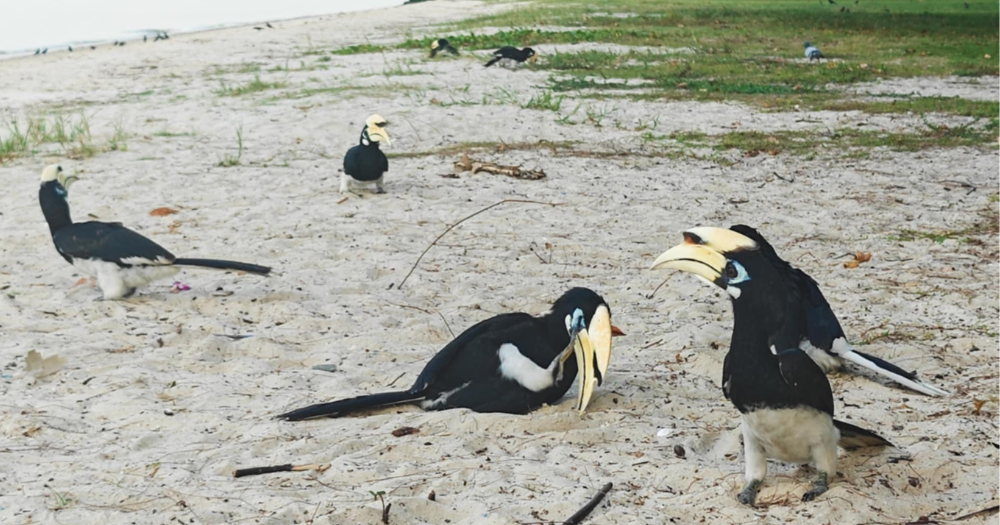
Visitors to Changi Beach Park on Oct. 23 might have found themselves admiring the view alongside a flock of hornbills.
The birds were having a nice dust bath in the sand, and local photographer Ray Chua was able to snap some up-close-and-personal shots.
Speaking to Mothership, Chua shared that while he has seen hornbills in the Changi Village area, it was the first time he had seen them engaging in such behaviour.
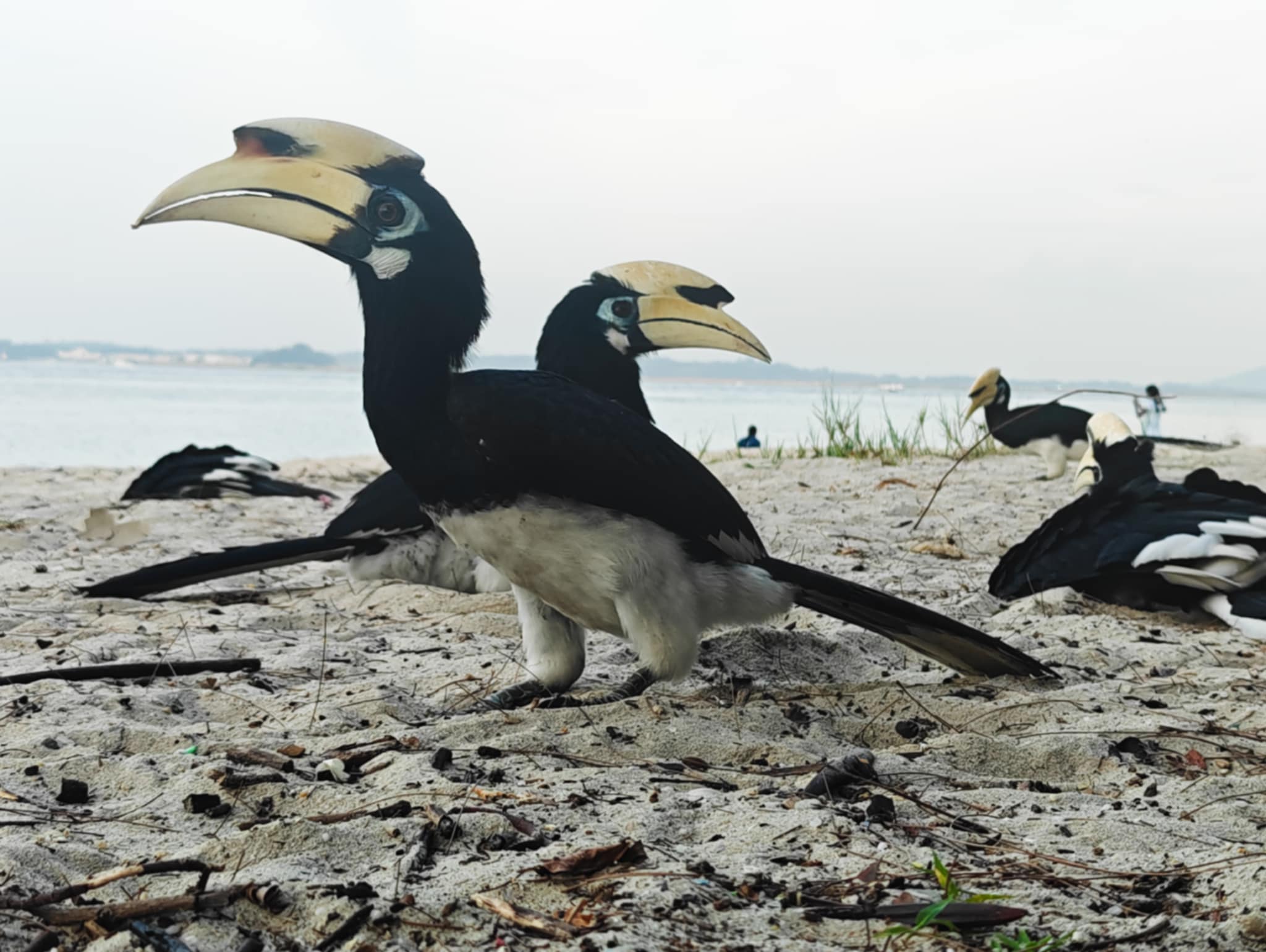 Photo from Zaobao
Photo from Zaobao
There were around a dozen hornbills on the sand, and the birds remained there for about 20 minutes.
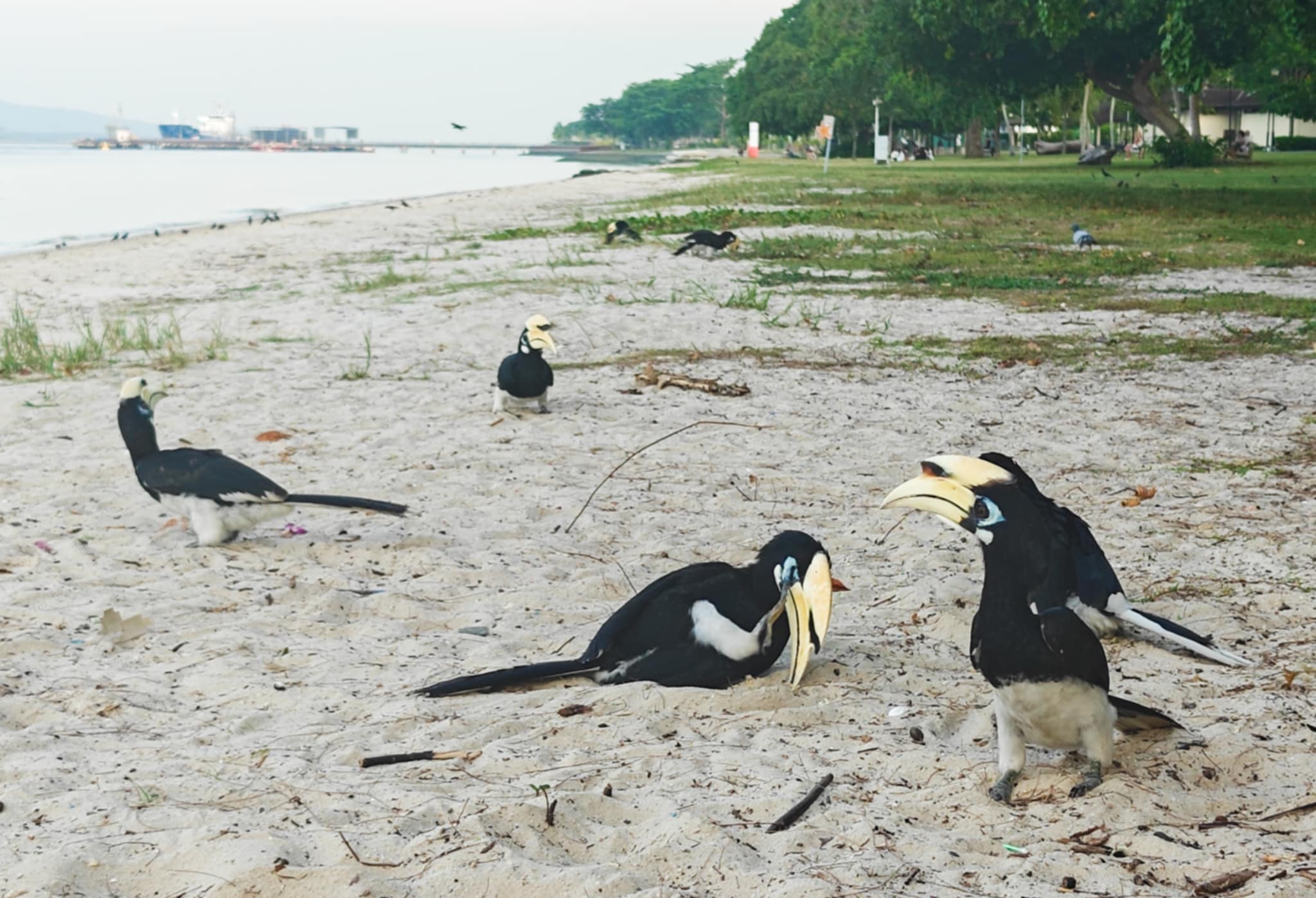 Photo from Zaobao
Photo from Zaobao
Animals partake in dust bathing to remove parasites from their fur, feathers or skin.
Birds take a dust bath by wriggling their bodies in the sand, flapping their wings and ruffling their feathers.
This helps to maintain their plumage. The dust also absorbs excess oil on their feathers and prevents them from becoming greasy.
Although seeing hornbills together in such numbers might be uncommon, the species is gregarious.
Outside of the breeding season, the birds have been known to form large flocks, and flocks of up to 170 birds have been observed in Khao Yai National Park in Thailand.
Parkgoers seen feeding hornbills
Chua described the sighting of the hornbills as a "pleasant surprise", recalling parkgoers picnicking in close proximity.
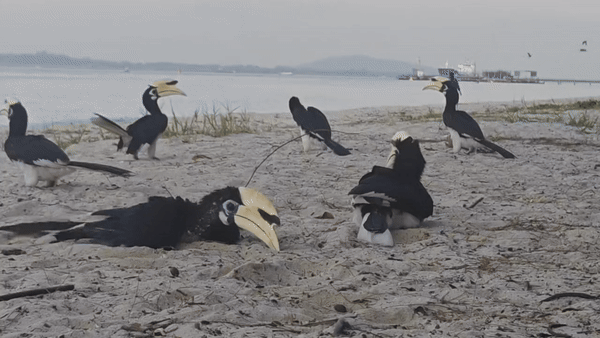 Video from Zaobao
Video from Zaobao
However, he has also encountered parkgoers feeding the hornbills with fruits.
A week prior to seeing the birds dust bathing, Chua observed a man sharing part of the apple he was eating with a hornbill perched next to him on a bench.
He also spotted another man feeding the birds with papaya.
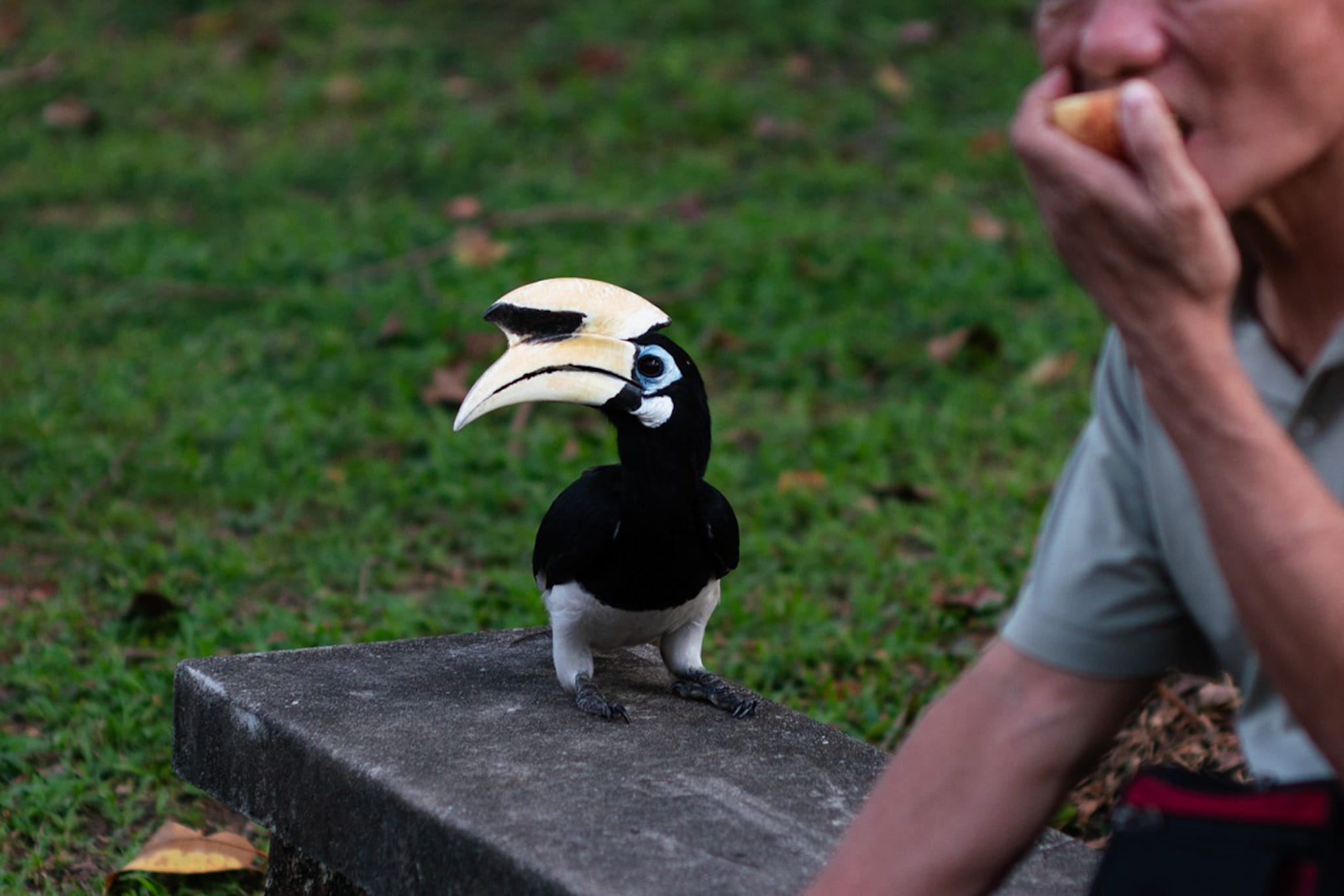 Photo from Zaobao
Photo from Zaobao
While it may seem like a delight to be in the vicinity of such a large and unique-looking bird, feeding wildlife in Singapore is illegal under the Wildlife Act.
Those caught doing so can incur a fine of up to S$10,000.
Feeding wildlife can habituate them to humans and, in the case of forest species like wild boars and macaques, encourage them to venture out of their natural habitats and into urban areas.
This could put them in danger of road traffic accidents and increase the chances of human-wildlife conflicts.
It could decrease their ability to search for food themselves.
The population of Oriental pied hornbills have been growing.
Once thought to be extinct in Singapore, the species made a comeback through repopulation efforts by the National Parks Board (NParks).
These involved designing and installing nest boxes in trees for the hornbills to breed in, and also allowed for NParks staff and researchers to study their behaviour.
As of 2024, there are estimated to be over 100 hornbills in Singapore.
Top photo from Zaobao
MORE STORIES




















